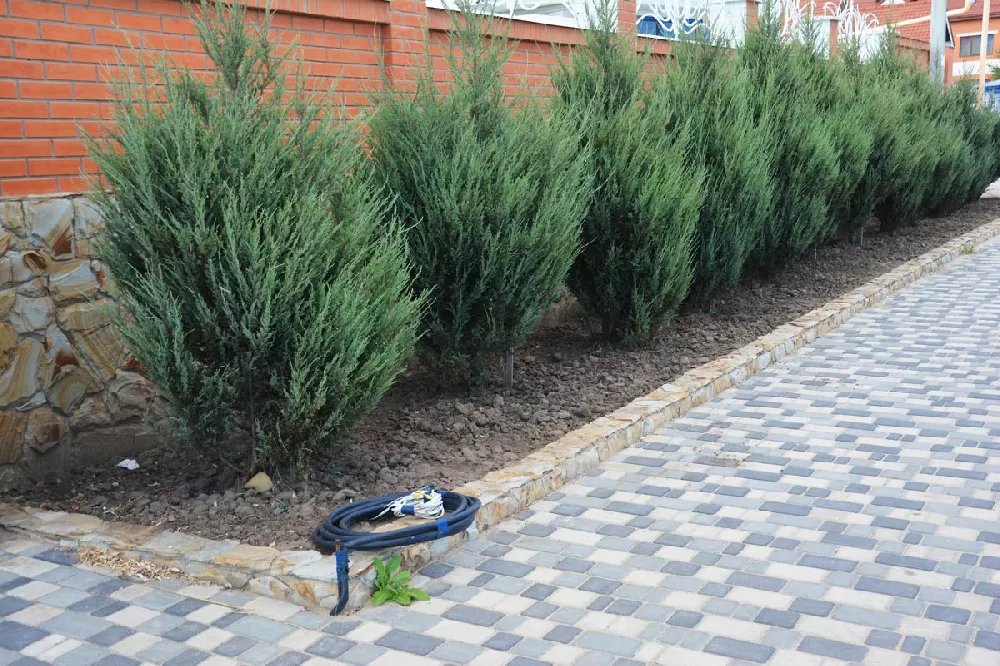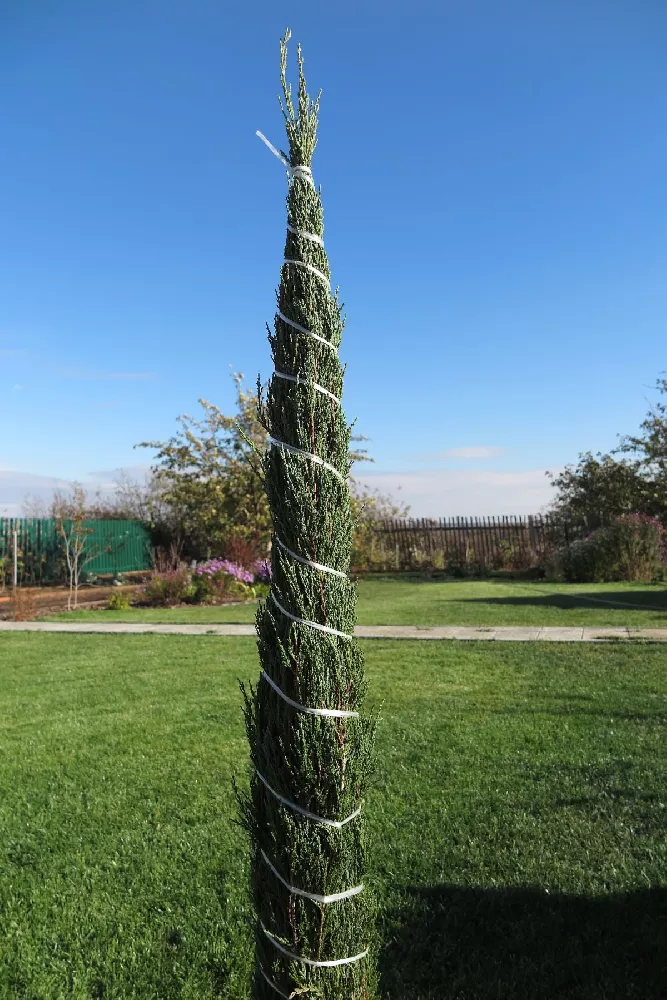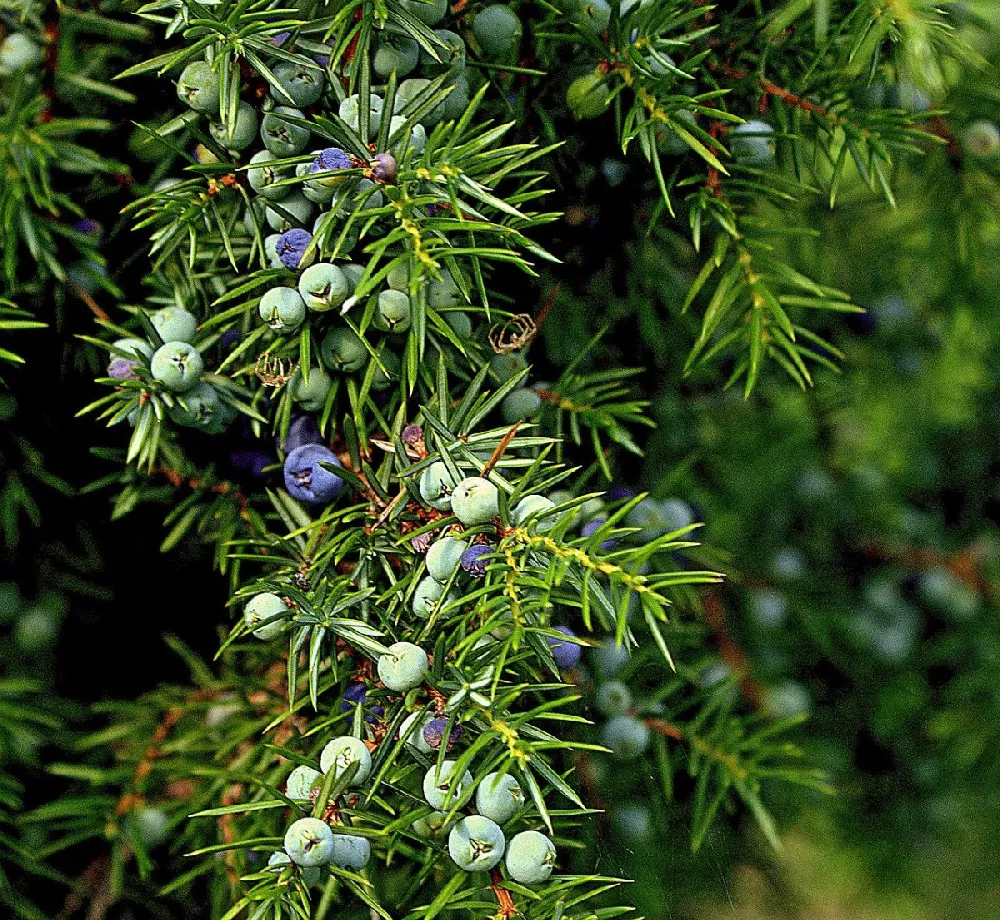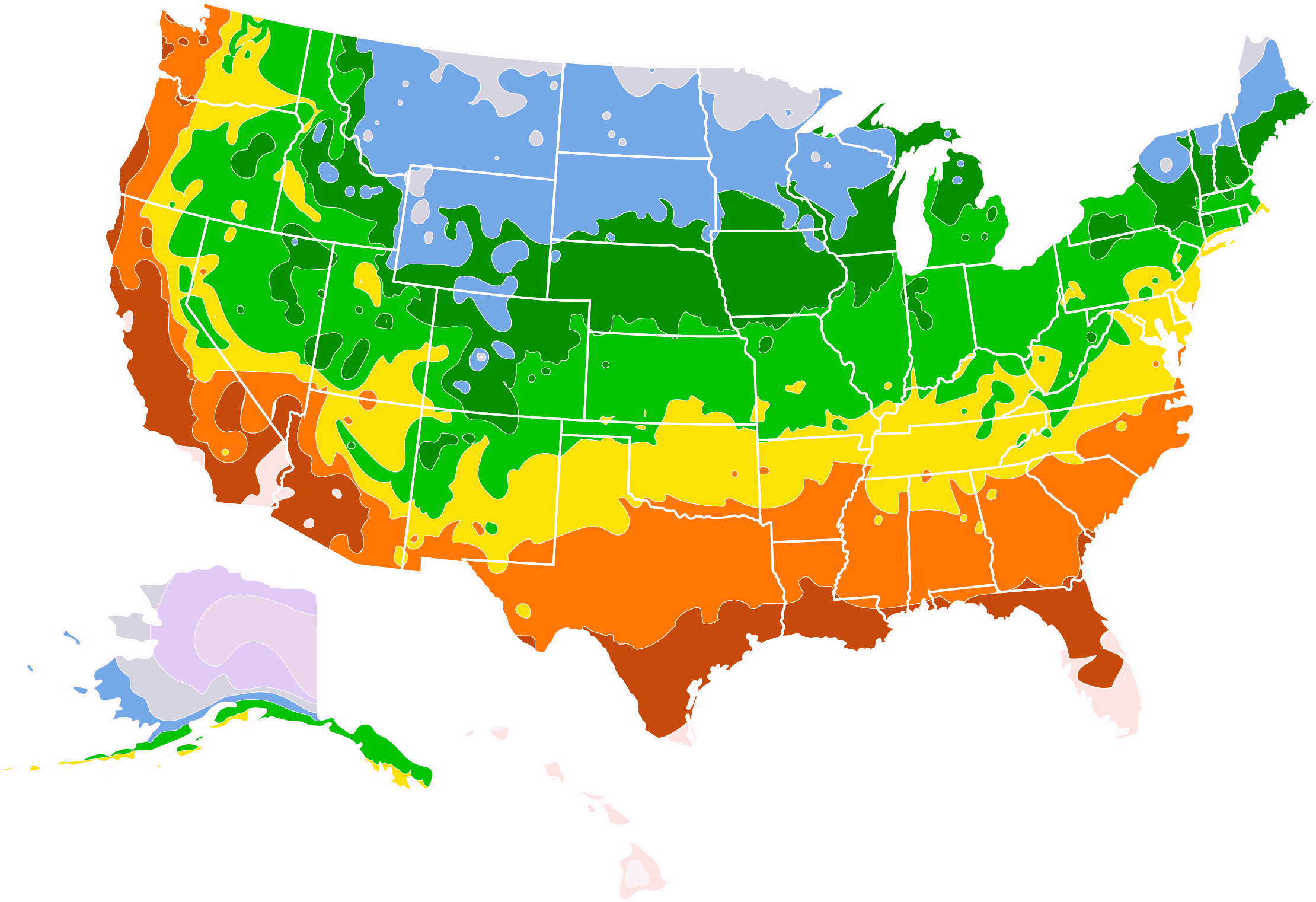- Home >
- Evergreen Trees >
- Skyrocket Juniper
Skyrocket Juniper for Sale - Buying & Growing Guide
- Ships in 1-2 days
- 1-Year Warranty Eligible
- Pots or accessories are not included unless specified in the product options.
Shipping Details:
Once your order is shipped, you’ll receive an email with a tracking number and estimated delivery date. Most orders ship immediately, but some items are seasonal and may only ship in spring or fall. These products are noted on the website.
Juniperus scopulorum 'Skyrocket,' better known as Skyrocket juniper, is an evergreen shrub with a neat vertical form. The foliage of this plant is evergreen and slightly blue in color, and it gives off a pleasant juniper scent that will fill your garden with a welcoming aroma. This plant also grows well even with minimal maintenance. Not only does the Skyrocket juniper adapt well to several types of soil while growing quickly, but it also holds its attractive form without the need for shaping or pruning.
- Its evergreen foliage has a sharp texture and a vibrant bluish tinge.
- It gives off a strong and recognizable scent.
- The Skyrocket juniper maintains a consistent shape with or without pruning.
Plant Care
Sunlight

The Skyrocket juniper shows the best growth in full sunlight but will survive in partial shade as well.
Watering
Water this plant about once per week during the growing season.
Fertilizing

Apply an acidic fertilizer once in early spring and again during the early fall.
Planting and Care
Planting instructions
Finding a suitable location to plant a Skyrocket juniper should not be difficult, as this plant can grow in many types of soil, including sand, clay, and loam. As long as the soil is on the acidic side and the area you choose receives full or partial sunlight, this plant should adapt well and begin growing quickly. You also won’t need to worry too much about spacing this plant. Its narrow form makes it unlikely it will begin to overcrowd your planting beds.
Watering and nutrients
After planting a Skyrocket juniper, you can plan to water it about once per week or more until it has become established. Once the plant is established, you can water it weekly or less during the growing season, as mature versions of this plant show some drought-tolerance. Fertilization should occur during the early spring with the option of an additional feeding in the fall. The best fertilizers to use are higher in nitrogen and can lower the overall soil pH.
Pollination
One of the more interesting botanical facts about juniper plants is that they can be either monoecious or dioecious. In other words, some junipers may hold both male and female flowers, while others may have one or the other. In either case, the flowers of a Skyrocket juniper will bloom in spring. These flowers mainly rely on the wind to conduct pollination. After successful pollination, a Skyrocket juniper that has female flowers will produce small juniper berries.
Pruning
Pruning for a Skyrocket juniper should take place in the early spring. Your pruning should be minimal and focus on removing any diseased or dead parts of the plant. Fortunately, a Skyrocket juniper will look fantastic and maintain a consistent form without the need for shaping. In fact, over-pruning can be an issue, so be sure to use caution when cutting away parts of this plant. You should also take time to ensure that your pruning tools are sterile to reduce the odds of spreading disease to your plant.
Pests, diseases, and animals
Disease and pest infestations can be prevalent issues for a Skyrocket juniper. Two of the most common disease problems to befall this plant are blight and canker, both of which are likely to alter the appearance of your plant’s foliage and branches. Insects like the bagworm, spider mite, and aphid are also concerns you should be wary of when growing a Skyrocket juniper. Often, the best way to eliminate those infestation problems is by spraying an insecticide.
Harvesting
The berries of many juniper plants are edible, as is the case for the Skyrocket juniper plant. These berries form in fall and are less than a third of an inch wide, with a bluish color. Juniper berries can be pleasant to eat in their raw form, but they can also work well in many types of recipes. Perhaps the most famous use for juniper berries is as the main flavoring in gin. However, you can find many other uses for juniper berries in your kitchen.
Achieving maximum results
If you struggle to find an ornamental evergreen that the deer in your neighborhood won’t devour, then the Skyrocket juniper is a plant you should consider. While these plants can have other disease and pest issues, deer browsing is rarely a concern. Also, you should remember that the aroma of the Skyrocket juniper plant can be incredibly intense. While many people enjoy the scent, you may find the smell unfavorable, making this plant an unsuitable option for your yard.
FAQs
How tall does a Skyrocket juniper grow?
In the right conditions, a Skyrocket juniper will reach about 15 feet tall when growing in a garden. However, there are some cases where this plant may surpass that height and grow closer to 20 or 30 feet tall. But no matter how tall this plant gets, its spread will remain comparatively small. The width of these plants is usually just a few feet, making them an excellent option for narrow planting spaces.
Do Skyrocket junipers have invasive roots?
The Skyrocket juniper does not develop invasive roots, meaning that it won't begin to outcompete nearby plants in your garden. These non-invasive roots allow the Skyrocket juniper to grow close to structures, such as foundations, without causing any concern. Add those root qualities to the narrow above-ground form, and you have a plant that can fit in many spaces without causing any issues.
What is the parent species of the Skyrocket juniper?
The cultivar known as Juniperus scopulorum 'Skyrocket' comes from a plant known as Juniperus scopulorum, or Rocky Mountain juniper. Rocky Mountain juniper lives throughout the western parts of the United States and Canada in the Rocky Mountain range. This plant has a pyramidal but rounded form and can grow to be more than 40 feet tall. The Rocky Mountain juniper also shares the lovely foliage characteristics of the Skyrocket juniper.
Compare Similar Products
Customer Reviews
 Great addition
Great additionArrived in great condition. So far so good.
 Perfect
PerfectPlants were healthy. The top of one was broke in shipping so reshaped it best I could. All 3 are doing great and already have new growth! Very satisfied.
 junipter sky rockets
junipter sky rocketsThis will be simple. They shipped me what I ordered when they said they would. Exactly as I wanted. Got planted the next day. I will see how they grow but they look very nice. Will order several more.
You can't add more Product Name - Product size to the cart.
OK







